Growing Blog
Growing Shaggy Mane Mushrooms
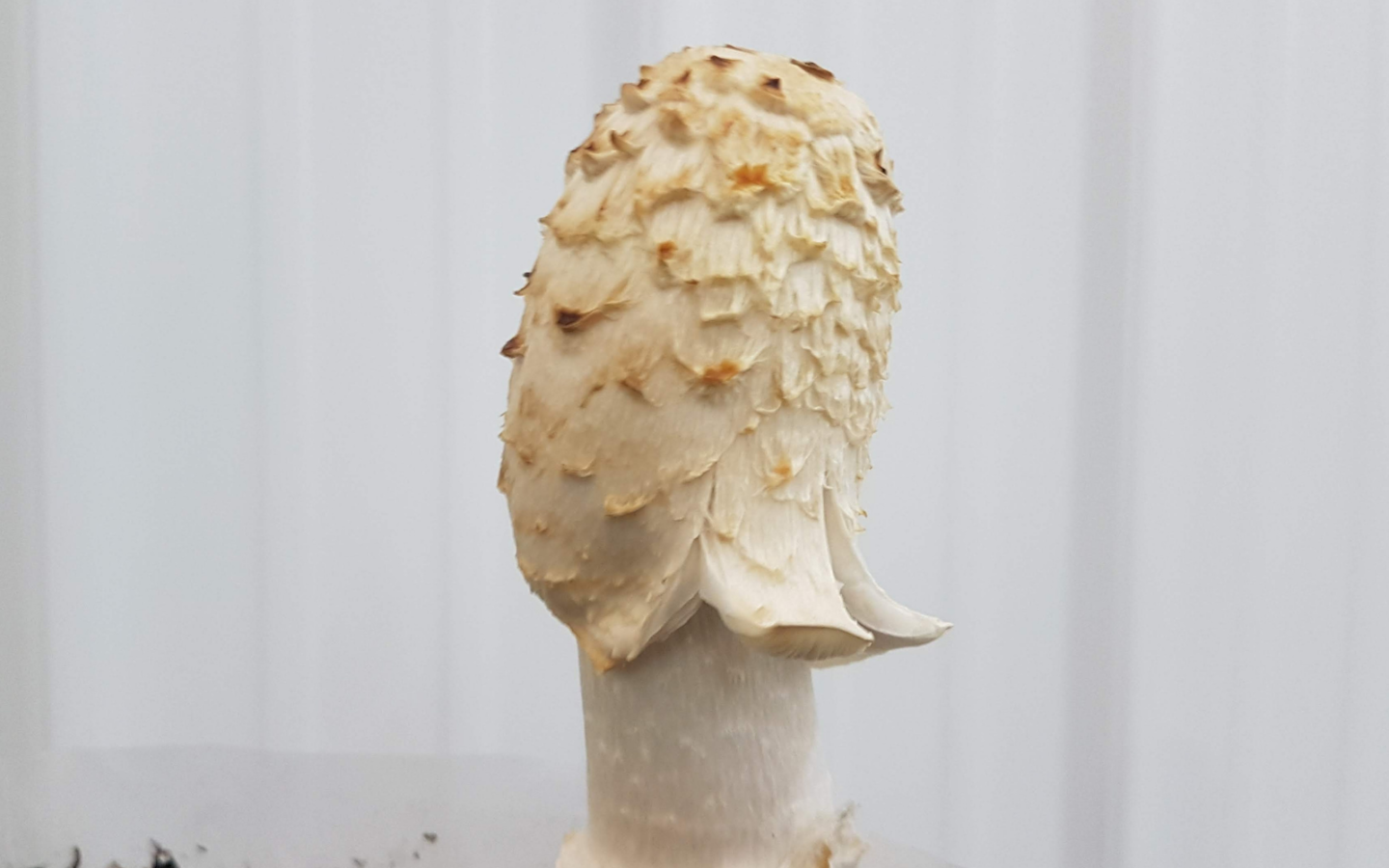
Not all gourmet mushrooms can be found at the grocery store.
Sometimes it’s because nobody has figured out how to grow them commercially- like in the case of Morels or Chanterelles.
But Shaggy Mane is a little different.
Coprinus comatus is actually quite easy to grow. In fact, in the commercial cultivation of button mushrooms, this shaggy looking mushroom is actually considered a pest.
The reason you don’t see this mushroom in the produce aisle is because of a self-destruct mechanism that makes the fruiting body dissolve into an inky goo soon after harvest.
If you want fresh Shaggy Mane for yourself, you have two choices:
- Be lucky enough to find it in the wild (and have the chops to confidently identify it)
- Grow it yourself!
Let’s take a look at what it takes to grow Shaggy Mane at home.
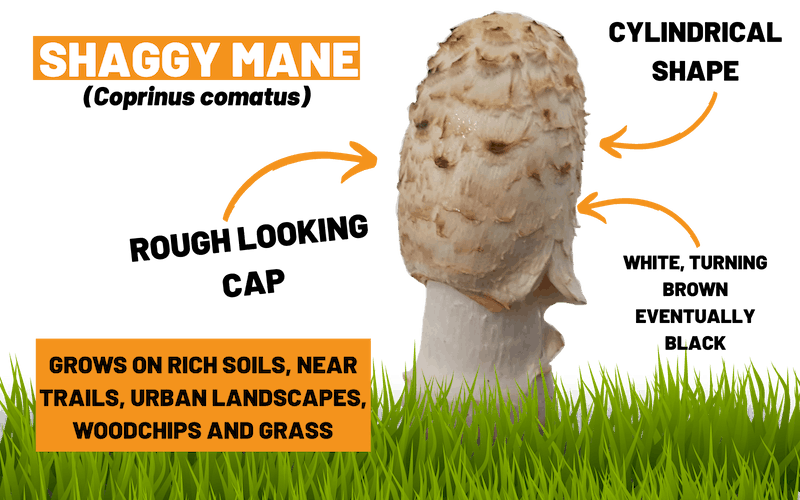
What Is Shaggy Mane?
Shaggy Mane is a member of the Coprinus genus, also known as “inky caps.”
In general, they are white, rough looking gilled mushrooms with a cylindrical, tall-standing fruitbody.
The latin name is Coprinus comatus (meaning long-haired), which makes sense considering it has a rough “long-haired” appearance.
The inky caps are so called because of the way they “deliquesce”-essentially turning into a thick black ink soon after spore release.
The gills of this mushroom are densely packed together. The self-destruction of the cap at the edges allows for some room for the spores to be distributed into the air.
Unfortunately, it also makes for a mushroom that doesn’t last long after harvest.
How Does Shaggy Mane Grow Naturally?
Shaggy Mane grows in rich soils near trails, urban parks, and lawns. It can also be found deep in the woods, although it seems to be more common in inhabited areas.
Shaggy Mane can grow singly, but it will often be found in large clusters. If you see one, chances are you’ll see many more.
This mushroom often appears in commercial agaricus mushroom farming operations as a pest, especially if the nitrogen content of the substrate is too high.
Shaggy Mushrooms are easy to identify, even for beginners. When they are young, they are a gourmet edible that is a favorite among mushroom pickers.
Growing Shaggy Mane
Coprinus comatus is an easy mushroom to grow, both indoors and outdoors.
The only reason I can think of that it is not a commonly cultivated mushroom is because of the extremely short shelf life.
Luckily, if you grow it yourself, you don’t have to worry about that!
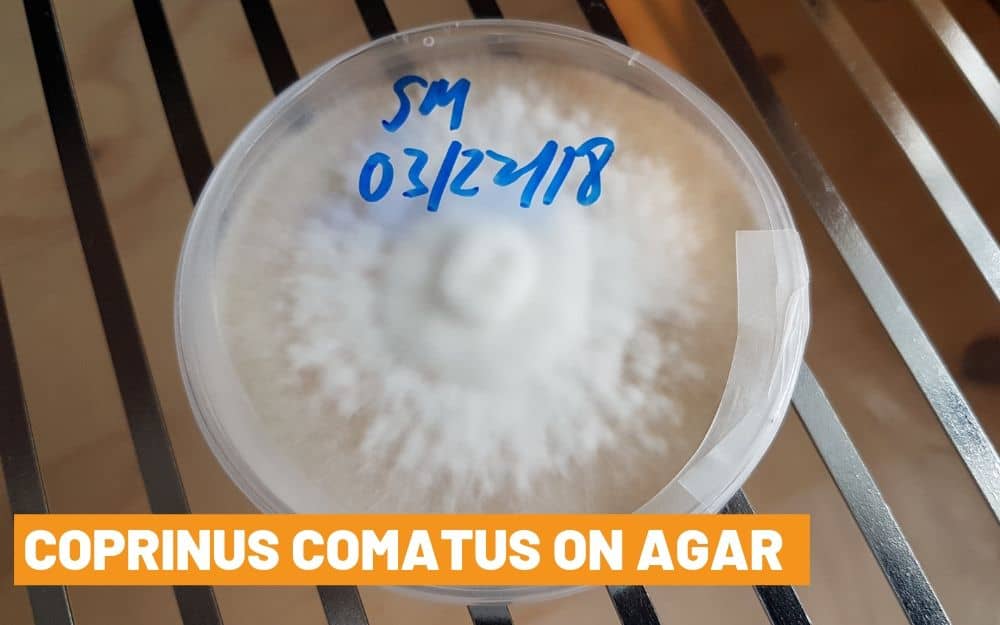
1. Culturing and Making Spawn
Shaggy mane spawn can be made with sterilized grain (specifically rye), inoculated from liquid culture, agar wedge or master grain spawn. Sawdust spawn will not work well for this species.
It will colonize happily at room temperature, with thick white, cottony mycelium growing tenaciously throughout. Grain jars should be fully colonized 2 weeks after inoculation with liquid culture or grain, closer to 3 weeks when using agar wedges.
The culture of Coprinus comatus can be propagated on Malt Yeast Extract Agar, and can be stored in the refrigerator for many months.
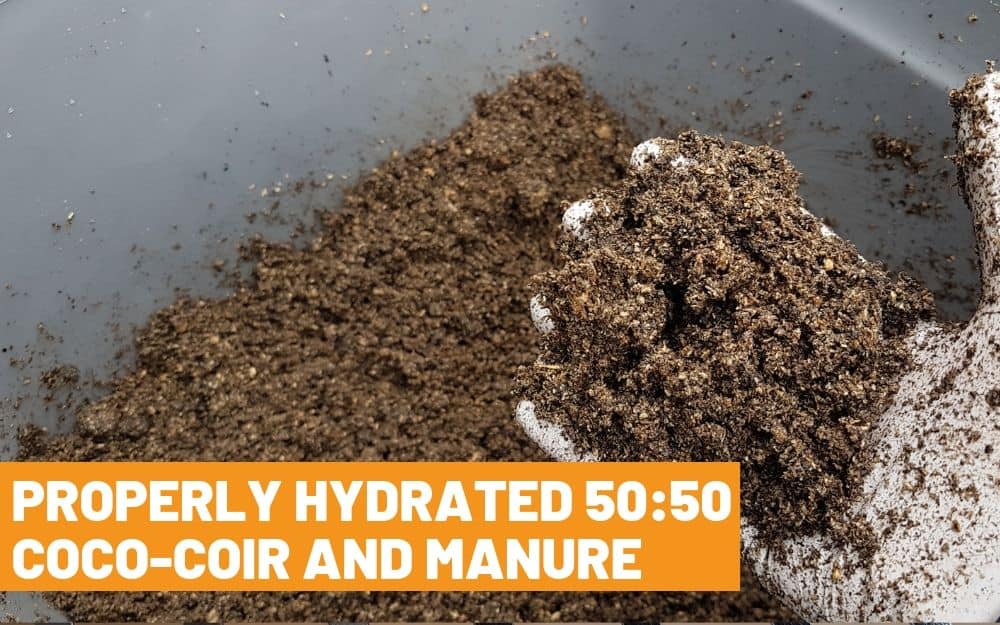
2. Shaggy Mane Substrate
Shaggy mane fruits well on manure based composites that are rich in nitrogen.
Common substrates are 50-50 mixes of pasteurized straw or sawdust with horse or cow manure. Supplemented sawdust fruiting blocks (without manure) will not provide adequate fruitings.
For home growers, a 50:50 mix of cow manure and coco-coir works quite well. The substrate can be sterilized, but doesn’t need to be since these low-nutrient substrates can be pasteurized without a huge risk of contamination.
The substrate should be hydrated to approximately 60%, or until it’s wet enough so that when you grab a handful no water drips off, but if you squeeze it hard, a few drops will run. If making substrate in small batches, it’s best to just start adding water and continue until the moisture content feels right.
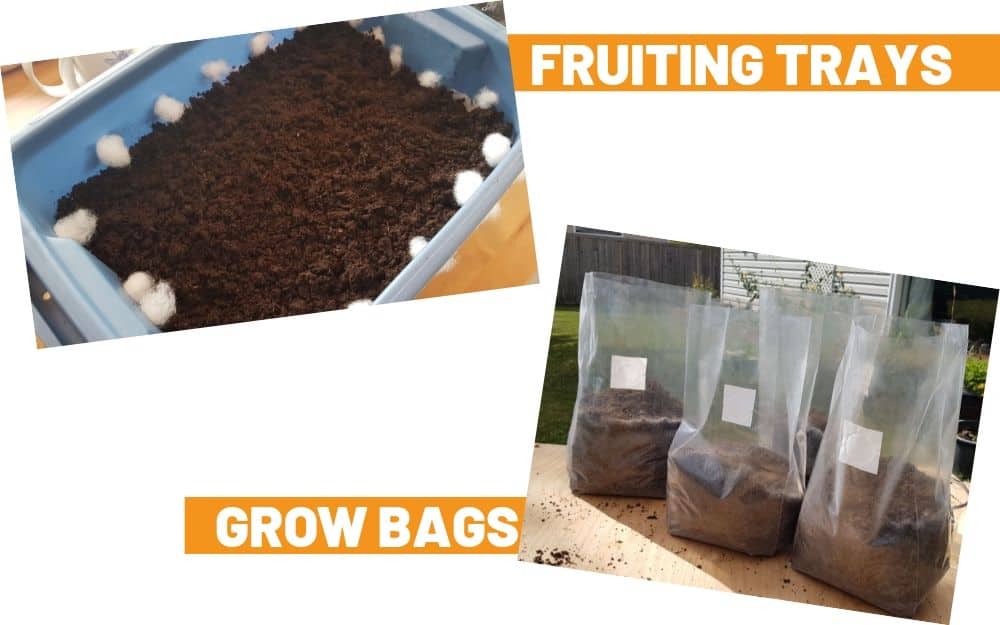
3. Fruiting Containers
Shaggy Mane can grow in mushroom grows bags, trays, outdoor beds, or virtually any horizontal surface.
I like to use mushroom grow bags because they can be fully sterilized and left to colonize anywhere with minimum risk of contamination.
You can also use trays or small totes, in which case you would only want to pasteurize the substrate.

4. Fruiting
Once the substrate is fully colonized, the Shaggy Mane can be put cased and put into fruiting conditions. The casing layer should be made up of pasteurized peat moss that has been hydrated to field capacity. You can also add some hydrated lime to the casing mix in order to prevent contamination.
Vermiculite can also be used as a casing layer if you don’t have access to peat moss. It is more expensive, but does not need to be pasteurized, and is very resistant to contamination.
The casing layer helps to maintain humidity on the fruiting surface of block or tray. The shaggy mane will start to colonize the casing layer. Eventually you will see large pins pushing through the surface.
In my experience, the Shaggy Mane pins are not characteristic of what the mushroom looks like when full grown. When they first appear, you may even think it is a totally different species!
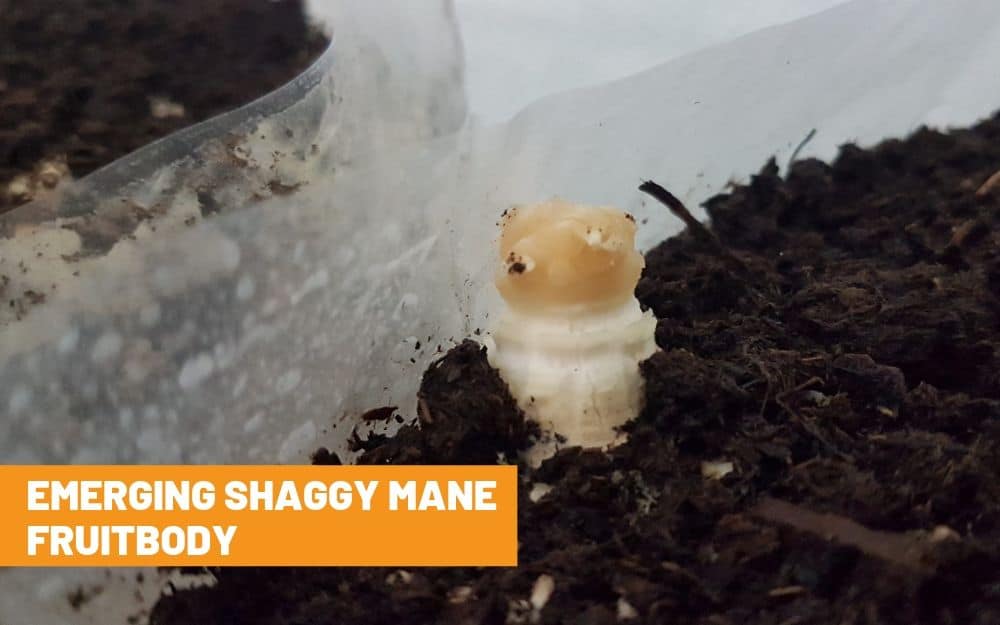
Humidity should be high, but using a casing layer allow for variation in the fruiting environment. Around 80-90% relative humidity throughout is a good target to aim for.
Shaggy Mane doesn’t seem to be sensitive to high CO2, so frequent air exchange is not critical to proper fruit body formation.

5. Harvest
Shaggy Mane should be harvested just before the cap starts to separate from the stem, indicating that it will start to release spores and deliquesce. Allowing the fruit to dry out slightly before harvesting can slow down the degradation of the fruit substantially. To do this, simply drop the humidity for 8-12 hours before harvest.
Harvest by cutting off at the stem near the casing, or simply twisting off with your hands. After harvest, the blocks or trays can be left in fruiting conditions for a second flush.

Growing Shaggy Mane Outside
Shaggy Mane can also be grown outside quite easily. Prepare beds of 50-50 straw and manure. Even cow manure from a garden center will work well.
The beds should be 6-8 inches deep. Inoculate the beds with grain spawn in layers, and keep moist. The mycelium will slowly work its way through the bed and eventually fruit.
This method will take longer to initiate fruit than the indoor method, and results are less predictable. Also, there is a good chance that the mushroom will also “escape” the bed and you will get sporadic volunteer fruitings elsewhere in your lawn.
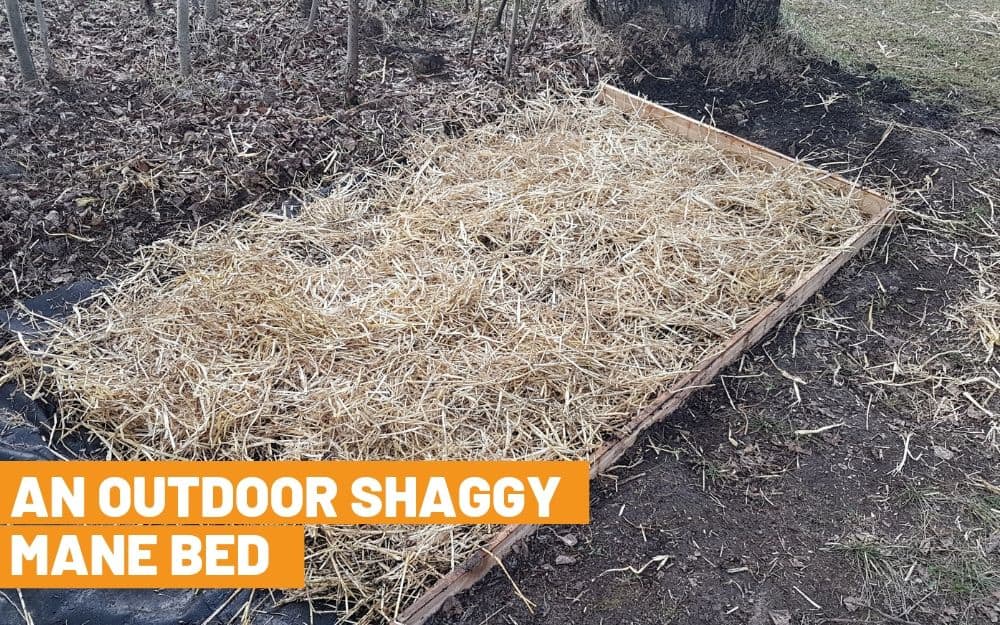
Enjoy Your Fruits
It’s time to enjoy your fruits!
Shaggy Mane can be a real treat. Slice them up and fry them in butter, coat them and fry them, or add them to omelettes and soups.
There seem to be lots of talk about not eating these mushrooms with alcoholic drinks, since they contain a chemical (coprine) that can cause sickness when mixed with alcohol. This may or may not be true- and can depend on the person, species, method of preparation etc.
Best bet is to play it safe and avoid drinking alcohol with Shaggy’s.
Whatever you do, just don’t let them sit too long!
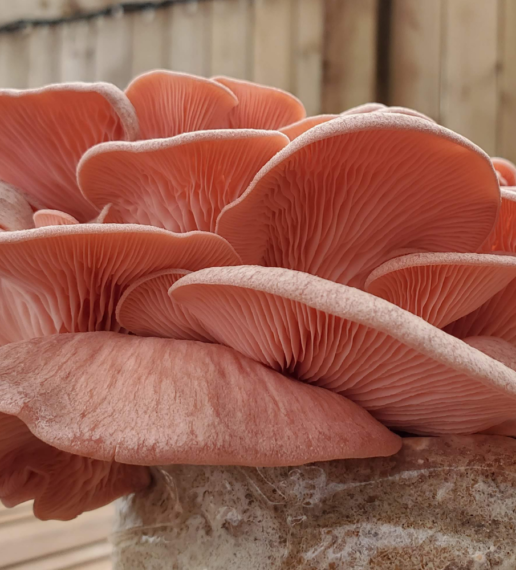
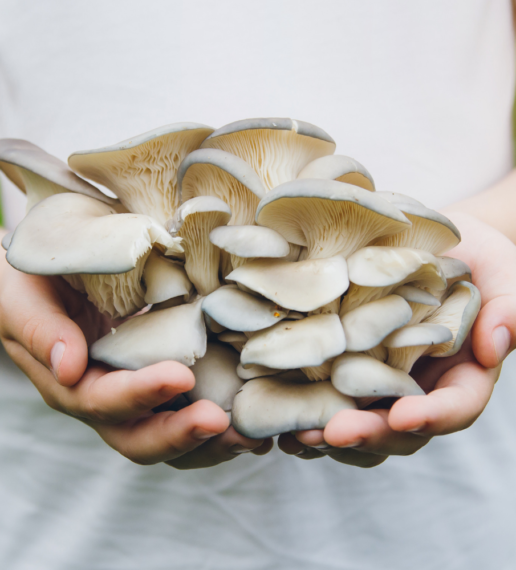
Good job Tony .Ty for sharing your knowledge, wish more people like you.God bless you and family. Efren
Thanks YOU for being here! 🙂
Thank you!!! I am learning with your wonderful lessons!!
Awesome to hear! Happy growing 🙂
Loving your instructionals! I’m wondering when is the best time to start my outdoor coprinus beds? Also wondering the same about my hericium?
Or do let them sit for long!
I became especially interested in growing this species after I read this Shaggy Mane Ink recipe: https://foragerchef.com/shaggy-mane-ink/
According to the author, the taste of the delicquesced mushroom is similar to that of Huitlacoche. Hopefully it is!
I found some large shaggy manes outdoors and managed to grow it on agar. Now I am making liquid cultures. Thanks to you I should be able to make some shaggy ink quesadillas in 2021!
Seems like shaggy mane would be a good candidate for domestication, selecting for meltdown resistance.
Can use the same method to grow buttons right? Portabella?